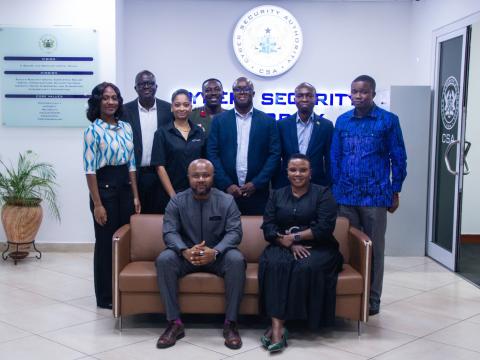
Who Will Safeguard Our Children’s Digital Futures?
Tamara Tutnjevic, reflects on why the G20 must stop treating children’s digital safety as optional and why leaders must make it a global investment priority.
19 November 2025.
Childhood is no longer confined to playgrounds or classrooms. For this generation, it stretches across screens and streets, a fluid reality where learning, play, socialising and self-expression intermingle seamlessly. Yet while governments and companies race to digitalise economies, the most vulnerable participants the children, remain dangerously exposed.
There is almost no child that has not have abusive or exploitative experience online. As a parent myslef, I am deeply concerned. Online sexual exploitation and abuse is one of the fastest-growing forms of violence globally, leaving scars that extend far beyond the virtual realm. The question we must urgently ask at the G20 Summit is not only how digital transformation will drive development, but whether it will be safe for our children.
Arguably, the pace of digital innovation has far outstripped safeguards. Billions are invested in connectivity, e-governance, and cybersecurity, yet child protection is too often treated as an afterthought, a peripheral checkbox rather than foundational infrastructure. This is both a moral and economic oversight: the resilience, skills, and trust of future generations hinge on their safety today.

Digital Safety as Infrastructure
Central to this argument is the notion that online protection should be treated as essential infrastructure, not optional add-on. One might contend that investing in child-safe digital spaces is merely good governance; yet the evidence is far more compelling. From survivor-led advocacy initiatives to interventions in many G20 countries, intentional investment demonstrably strengthens human capital, builds resilience and fosters societal trust. Digital safety is not just about restriction; it empowers children to learn, create, and participate fully in society.
Although persuasive frameworks exist such as the recently adopted UN Cybercrime Convention, their imp act remains largely aspirational without coordinated funding, robust capacity building, and south–south collaboration. Rarely has such an idea been so eloquently flawed in theory, yet so practical in potential when applied. One might observe that the technical debate around cybersecurity risks obscuring the very human dimension that underpins long-term progress.
Mobilising the G20
Safe Online , is calling on organisations and individuals to join an Open Letter to G20 leaders urging a fundamental shift: treat children’s online safety as a shared global priority. This is not about creating silos; it is about aligning digital innovation with social protection. Public-private partnerships, catalytic financing, and national-scale programmes are ready to deliver measurable impact but only if investment matches ambition.
To a certain extent, the urgency is undeniable. If the G20 can mobilise billions for climate resilience or pandemic preparedness, why not for the digital future of children? The cost of inaction is staggering. Societies risk producing a generation traumatised, mistrustful, and deprived of opportunity young people who will grow up questioning the promise of a connected world.
This is why our coalition is organising round table to discuss investment in online safety, bringing together governments, tech companies, CSO, and international financing experts to jointly find solution for safer and more inclusive internet access.

What Success Looks Like
Success requires a multi-layered approach: integrating child protection into AI governance frameworks, supporting financing mechanisms to scale national solutions, and fostering collaboration across borders and between governments, private sector actors, and civil society. It is a blueprint grounded not in abstract theory but in evidence and lived experience.
The Human Imperative
Children are not passive users of the digital world they are creators, learners and citizens of it. Their safety is non-negotiable; it is foundational. While persuasive arguments for growth and innovation abound, they often overlook a simple truth: development is hollow if it leaves the most vulnerable behind. The voices of survivors, parents, and children themselves remind us that digital transformation without protection is not progress it is peril.
The call to action is clear: G20 governments, multilateral partners, and private sector leaders must commit to substantial, sustained investment in child online safety. Evidence exists. Momentum exists. Proven models exist. What is missing is the courage to act at scale. The future of childhood, and the credibility of our digital economies, depends on it.
Invest in safe digital futures today. Protect children online. Shape a trustworthy digital world for tomorrow.
Tamara Tutnjevic is Senior Director of Public Policy and Influence at World Vision, where she leads the organisation’s global advocacy to shape policies that protect and empower vulnerable children and families. With over two decades of experience in international development and human rights, she is recognised for her leadership in advancing women’s and children’s rights, with a particular focus on preventing violence in childhood. Tamara combines evidence-driven insight with practical, solutions-oriented approaches, championing systemic change that safeguards the most vulnerable.

